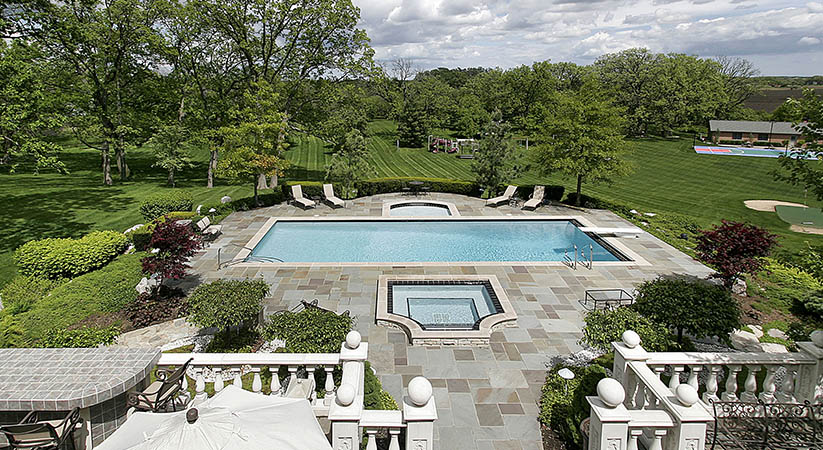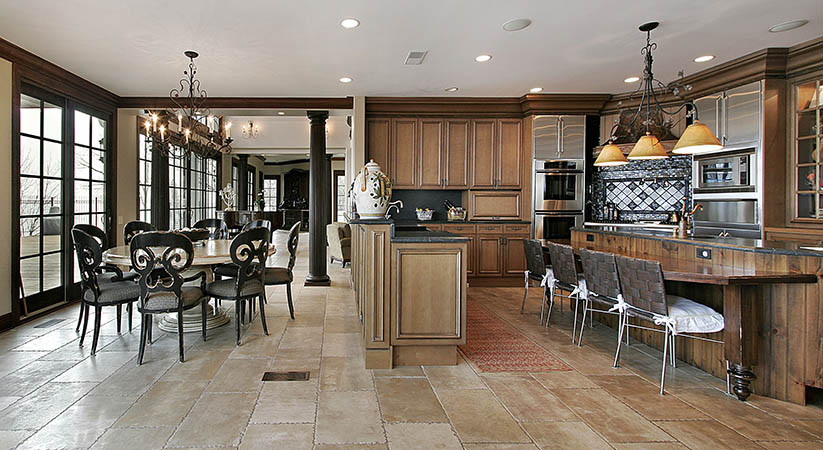Patios are made up of one of the six main materials. However, the style you choose, as well as the material, will ultimately decide how your patio will appear. These are just a few of the things you should be aware of before contacting patio contractors.
The patio material will simply be determined by the location of your patio, the size of your outside space, personal tastes, and your budget.
Before you begin your patio construction project, be certain that everything is in accordance with local regulations. Furthermore, ensure that all criteria have been met.
The finest patio materials on the market
In this post, we have compiled a thorough list of the finest patio materials as well as their applications.
Concrete
Concrete is perhaps the most flexible and versatile material for patio flooring. It is a time-tested substance that combines water, sand, cement, and gravel. Furthermore, it is available in a variety of styles and finishes.
Concrete may be shaped to suit any surface shape if your contractor uses well-constructed material forms. The primary advantage of concrete is that it is easily brushed, scored, stamped., colored, or ornamented.
Bricks
Bricks are produced by burning a combination of different materials and clay in brick kilns. For thousands of years, this has been the traditional method of manufacturing bricks. As a result, it is time-tested, much like concrete, and lasts for a long period. Furthermore, it has a very traditional and clean appearance that complements virtually all architectural types.
In that regard, it is much more adaptable than concrete. Popular brick patterns for an outdoor patio such as running bond, herringbone, and jack-on-jack.
Flagstone
Flagstone is also a famous material readily identified by its uneven design. This material is often sold in the form of 1.3-inch-thick stone slabs. When the floor is wet, it provides good grip due to the rough surface. Flagstone comes in many varieties, including limestone, quartzite, bluestone, and sandstone, bluestone, quartzite, and limestone.
In general, the thickness of flagstone should be at least a half inches when used on patios. Furthermore, the slabs should be put immediately on the sand, bed, or soil. Some contractors also utilize thin layers of flagstone. Thinner layers, however, must be placed atop the wet mortar which will reduce the danger of cracking.
Tiles
Tiles are a contemporary option that is utilized on homes with modern construction. In the case of patios, we suggest that you choose unglazed ceramic tiles. The glazed ones may be used for highlights and edges. This is because glazed tiles may be dangerous when wet, since they produce a highly slippery surface. As a result, glazed tiles may be a nuisance in the rain.
The most popular kinds of unglazed patio tiles are porcelain, terracotta, and quarry. Stains, on the other hand, are a major issue when it comes to tiles. Coatings and sealers may help avoid these stains. They can also provide protection from moisture, allowing them to keep their color for a longer period.
Conclusion
While the materials listed above are frequently used in outdoor patios, there are a plethora of other options available. In this regard, you might want to do some research before choosing any material.
Do not forget that every material comes with its own benefits and disadvantages. By learning more about it, you shall make better decisions regarding your patio construction project and get the best value.
So don’t forget to question your masonry contractors about all your choices. Expert guidance based on your specific circumstances may go a long way toward assisting you in creating the patio of your dreams! Lagrass



